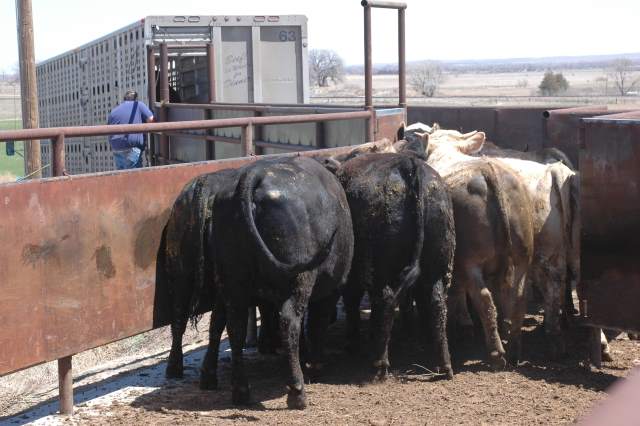August 26, 2015

Bottom line, says Steve Koontz, professor of agricultural and resource economics at Colorado State University, is the cattle feeding sector will continue to use more formulas and other alternative marketing arrangements at the expense of the cash market.
Here’s his question: will the cattle business continue to move in a thoughtful process away from using the cash market as its price discovery tool or will it be swept along by the process and have to scramble to find alternatives?
Koontz has been studying the fed cattle market since 2012 in an attempt to determine how thin is too thin in the cash trade. His research is largely complete and you can find executive summaries of his findings on his website. Two summaries are finished and the final summary will be available after Sept. 30.
Nationally, he says about 20% of the fed cattle are traded on the cash market, and that’s sufficient to maintain adequate price discovery. However, there are some glaring regional differences. “There are some potential problems with Texas. That’s simply a very thin cash market.”
In fact, less than 5% of the fed cattle in Texas trade on the cash market. But he says the Texas market is very strong in its ability to discover price. “If you do a little bit of cash trade there, you can have very good price discovery,” he says.
For Kansas, he estimates that 10-15% of the cattle trade needs to be in the cash. Nebraska, which has the strongest cash trade presently, needs at least 7-10%. “But the Nebraska market has never gotten that low,” he observes.
As Koontz talked to market participants, it became clear why cattle feeders have moved toward alternative marketing arrangements. “Markets consume resources. It takes time to participate in a marketplace and we do what we do because we can make money at it,” he says.
And formulas and other marketing arrangements are simply more efficient to use. Cash markets can be disorderly, costly and very risky. He says a lot of cattle feeders tell him they simply can’t go through the week without knowing which cattle will move and when.
“So what are formulas worth? The bottom line is I could get people to construct a number pretty close to $25-per-head benefit,” he says. “If it’s worth $25 per head, you’re not going to stop doing it. I couldn’t get folks who were on formulas to say they were very interested in going back to cash.”
Forward contracts are similar, although feedyards that use that marketing methods had a hard time attaching a dollar value to it. That’s because that’s just how they do business. “If you can’t do business any other way, you’re not going to stop doing it,” he observes.
On the other hand, those who use cash market price information estimate it’s worth from $1 to $3 per head to them. “So formulas are worth $25 a head; cash is worth $1 to $3. The scale on that is pretty clear. We’ll continue to use formulas and likely do more formula marketing.”
That doesn’t necessarily spell the demise of the cash market. However, Koontz says the beef business will be well served to go forward thoughtfully as it molds its future. If the trend is toward fewer and fewer cattle traded on the cash market, the industry as a whole will need to identify where along the value chain it will do price discovery and then develop the infrastructure and the process to accomplish that. The industry will have to do something, be proactive, to make sure that it has the markets and market access that it wants, Koontz says.
If it doesn’t, it will perhaps find itself one day with a cash market that’s too thin to adequately serve as a price discovery tool and no viable alternative. Given that markets don’t handle uncertainty very well, that’s an outcome everyone should want to avoid.
You might also like:
3 non-traditional feedstuff options to consider for your cow herd
Stocker index prices stocker calves more precisely
3 ways to improve next year's grazing today
Burke Teichert: Are you a low-input, high-management rancher?
How to prevent & treat pinkeye in cattle
How to get more than a preg-check from the vet's preg-check visit
You May Also Like



